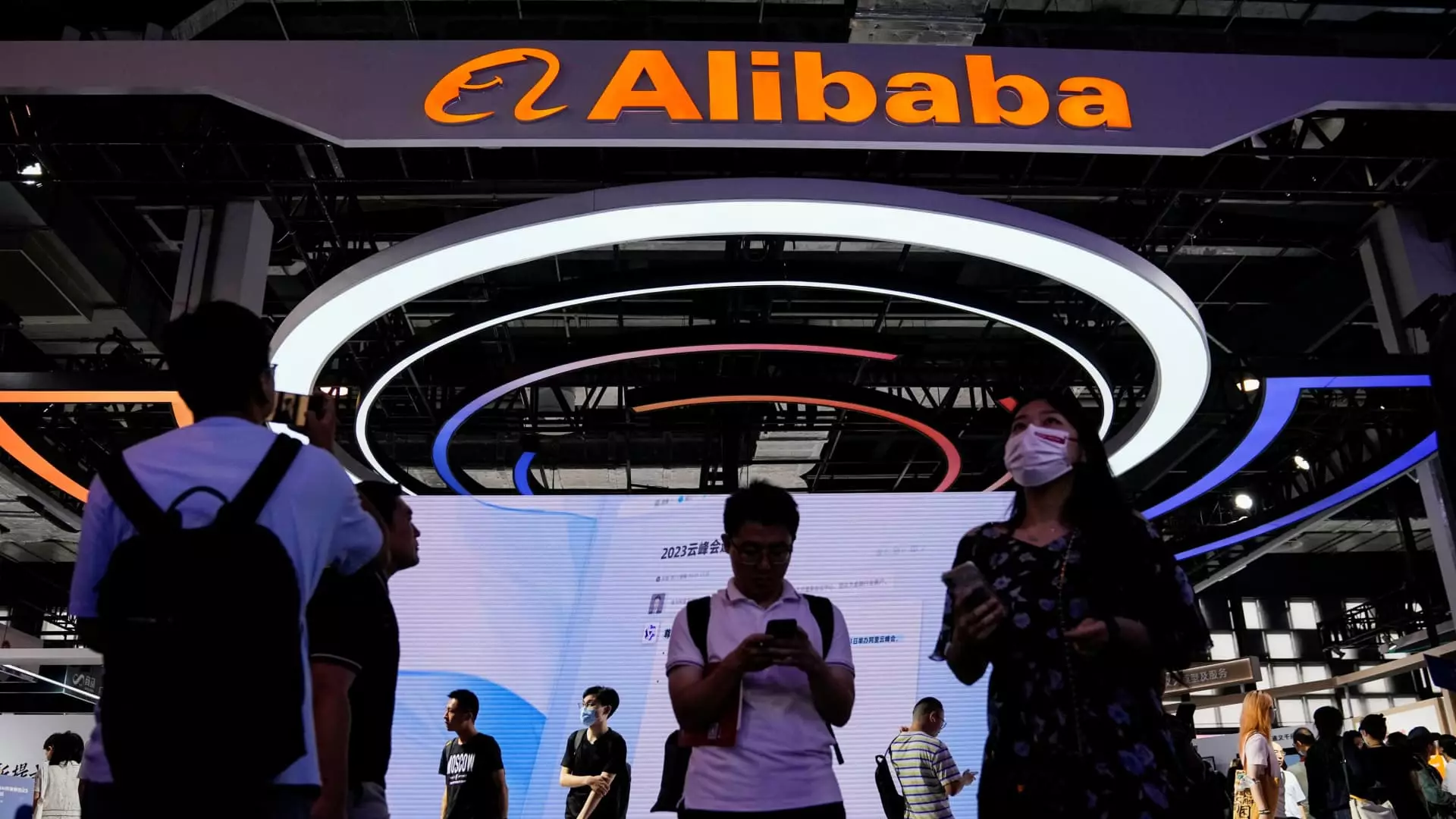The financial world is witnessing an undeniable shift — a divide that grows ever more pronounced between Chinese and U.S. stock markets. As the S&P 500 falls into correction territory, marking a significant downturn, the MSCI China index is simultaneously experiencing an upswing, making this year one of its most prosperous to date. The narrative surrounding these markets isn’t simply one of numbers; it raises fundamental questions about the future of global finance and the role of emerging technologies in shaping market sentiments.
American investors are grappling with the implications of a faltering domestic market, while their Chinese counterparts are riding high on a wave of optimism driven by advancements in artificial intelligence (AI). This shift isn’t merely a statistical anomaly; it suggests deeper operational and psychological differences in how markets react to innovation.
The Rise of the ‘Fab Four’
Driving this optimism in China are the so-called “Fab Four” tech giants — Baidu, Alibaba, Tencent, and Xiaomi. Their ascendancy is reminiscent of pop culture phenomena that seem to transcend the realms of finance. Significantly, they are not just rising; they’re redefining the technological landscape, drawing parallels to The Beatles when their influence peaked. Each of these companies is strategically harnessing AI to expand their influence, signaling to the world that China is not just keeping pace but potentially outpacing the West in critical tech sectors.
What’s particularly compelling about the ‘Fab Four’ is their unique position within the Chinese economy. As they leverage massive user bases across social media and e-commerce, their stock values are not merely numbers on a trading floor; they are an embodiment of the cultural and technological zeitgeist resonating across a rapidly digitizing China. While the U.S. technology giants — often dubbed the “Magnificent Seven” — wrestle with market corrections, their Chinese counterparts are buoyed by robust government support and a growing appetite from both domestic and international investors.
A Tale of Two Technologies
As markets tremble stateside, it’s crucial to analyze the contrasting narratives of technological innovation coming out of these two giants. Companies like Alibaba and Tencent are emphasizing their advancements in AI, claiming to develop models competitive with renowned firms like OpenAI and DeepSeek. Notably, Baidu’s Ernie model has rolled out new capabilities across various applications, showing that it is not merely a tech player, but a formidable contender in the autonomous driving landscape as well.
Meanwhile, the contrasting narrative from U.S. firms has become alarming. As the “Magnificent Seven” experiences significant losses this year, the story becomes one of stagnation and apprehension about future growth. This disparity can’t be overlooked; while U.S. companies face a tumultuous landscape, Chinese firms are blowing past them on the AI runway, signifying a possible shift in global technological supremacy.
Investor Sentiment: A Game of Expectations
Investor behavior is critical in understanding the dynamics at play between these two marketplaces. Notably, Hong Kong’s stock movements have seen unprecedented interest from mainland investors, suggesting a growing confidence in Chinese markets amid discouraging trends seen in the U.S. As hedge funds scramble to capitalize on what could be a revolutionary period for Chinese tech, long-term institutional investors are beginning to follow suit, albeit with caution.
This wave of confidence might also signal a broader trend: a migration of investor interest away from the U.S. as questions surrounding its economic stability simmer. The perception is shifting; while U.S. markets are plagued by uncertainty, Chinese stocks are characterized by rapid growth and potential, demonstrating that the once clear leadership of American technology may now be a relic of the past.
Bridging the Valuation Gap
One of the pressing narratives emerging from financial analysts is a ‘large valuation gap’ between Chinese tech firms and their American rivals. As growth trajectories diverge, it becomes pivotal for investors to recognize this disparity. The expectations surrounding future AI developments in China prompt speculation that this gap will narrow, highlighting that opportunity often arises from volatility and uncertainty.
As we observe this pivotal intersection between U.S. and Chinese markets, the necessity for critical reflection becomes apparent. This entire scenario challenges the status quo, compelling stakeholders to rethink investment strategies and market positioning in light of a rapidly evolving global landscape. Is it possible that what we are witnessing is not just a temporary shock but the onset of a new era in global finance? The answer lies in the ability of both markets to adapt and respond to the ever-quickening pace of technological innovation.


Leave a Reply